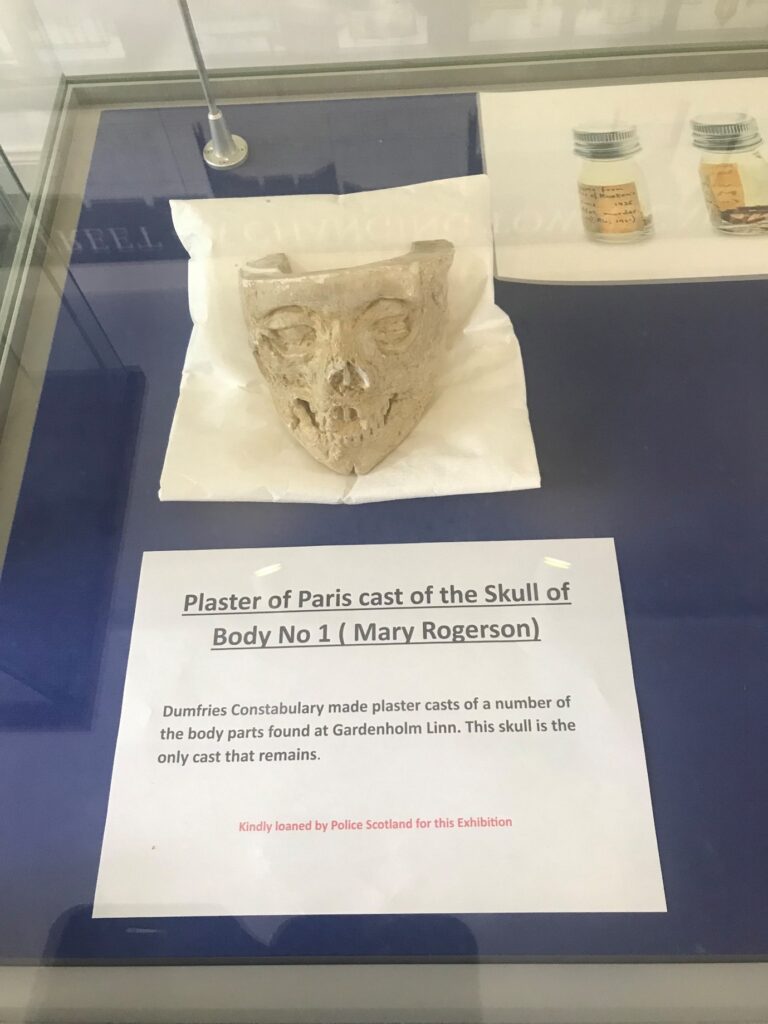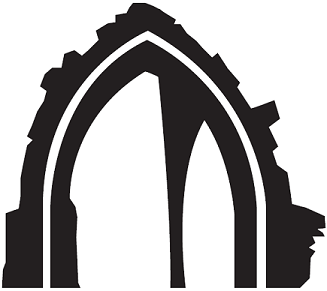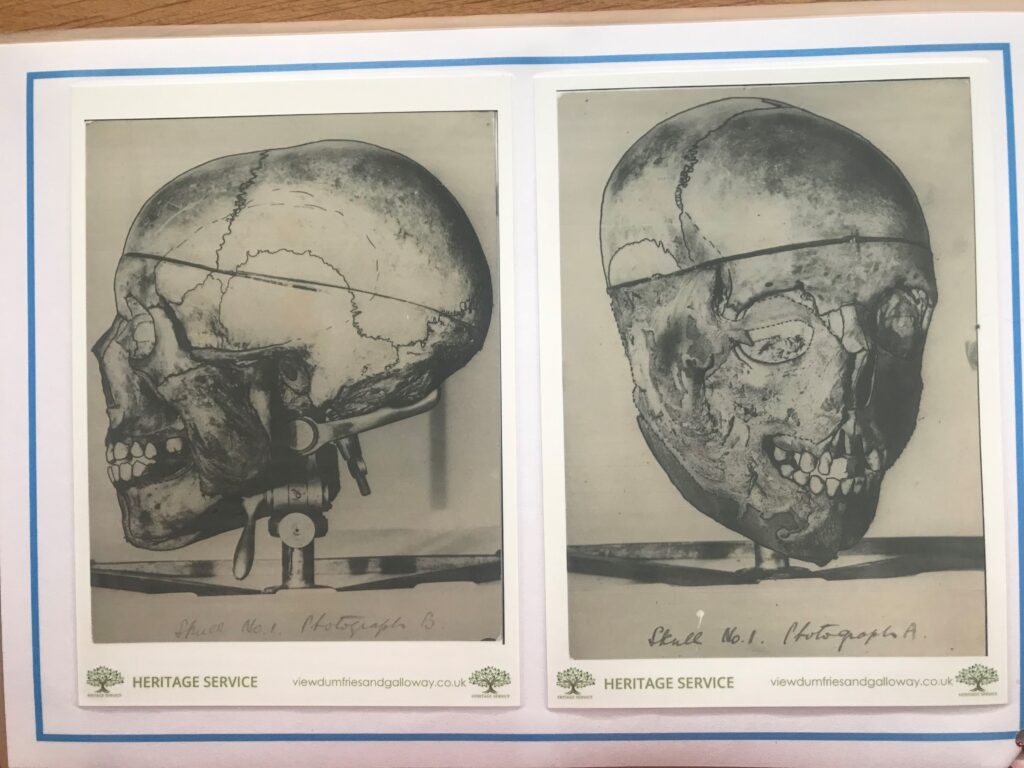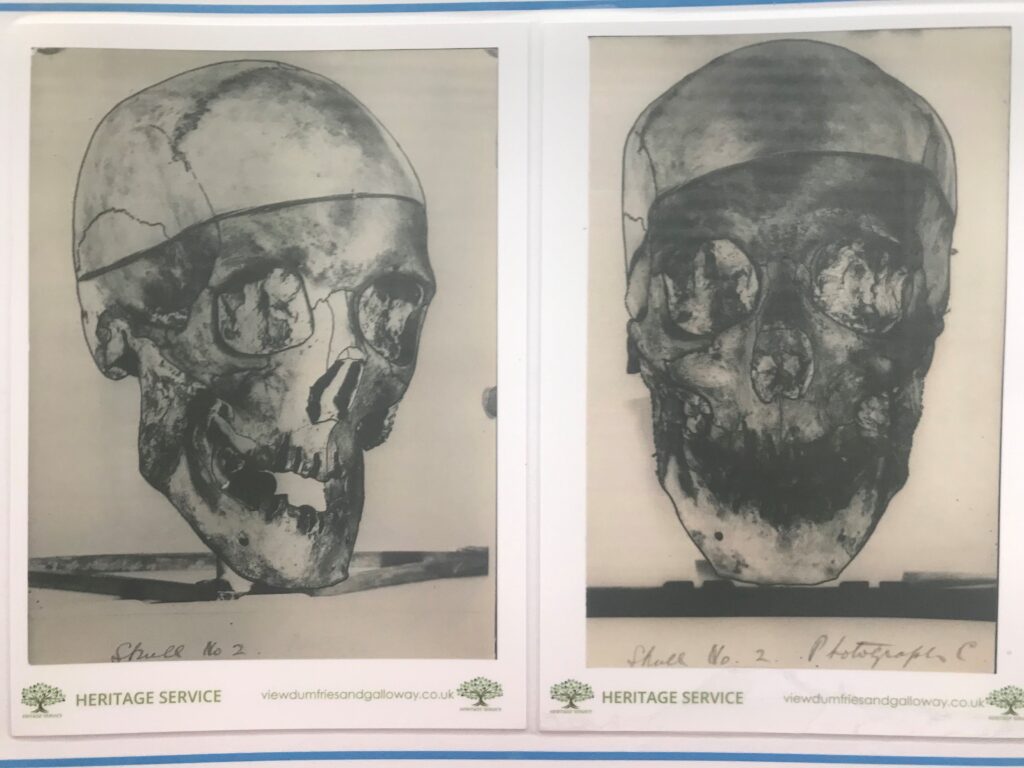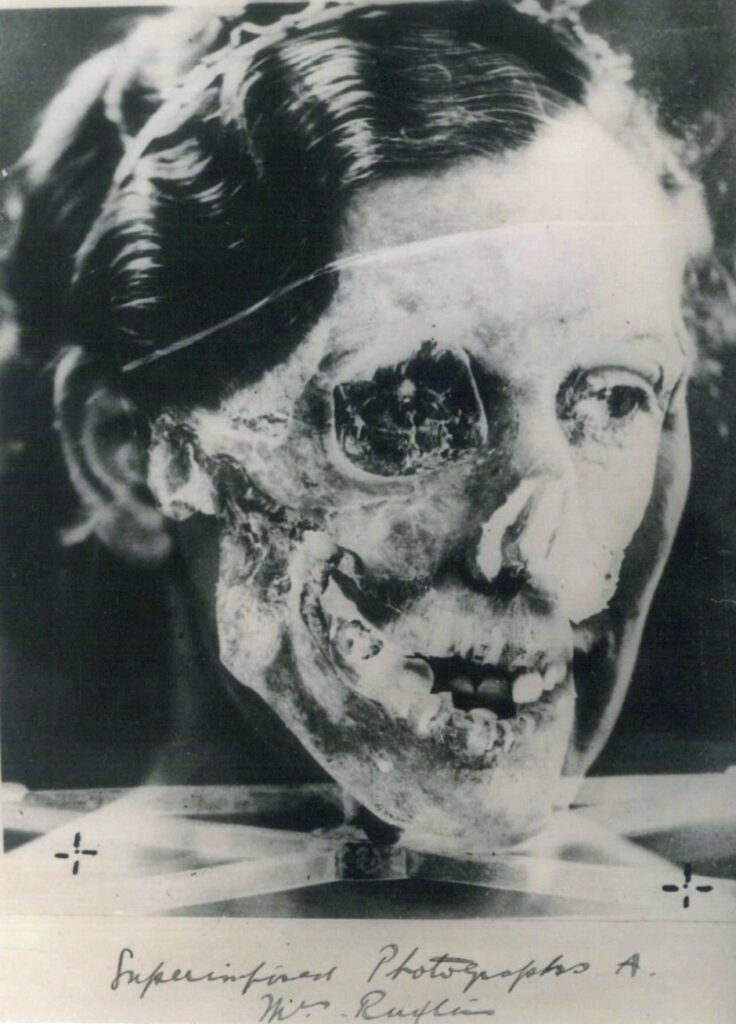
Professor Brash noted that newspaper photographs of Isabella and Mary ‘..showed that the proportions of their features were not only unmistakably different but that they corresponded in a general way to the proportions of the respective heads from Moffat.’ This observation led to the development of the innovative techniques used to provide further evidence for identification.
The results, particularly in relation to Isabella Ruxton were striking- see image above. Whilst the results could not be presented as evidence of positive identification, in Professor Brash’s opinion they were conclusive.
Photographs of each woman were selected and used for comparison with the skulls- 2 each selected.
- Photos were enlarged to life size and each skull photographed in several positions.
- Outlines of both skulls in each position were then compared with outlines in the corresponding portraits.
- Skulls photographically superimposed on the portraits.
These were the photographs selected to be worked on.

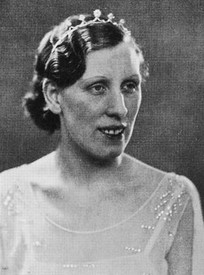
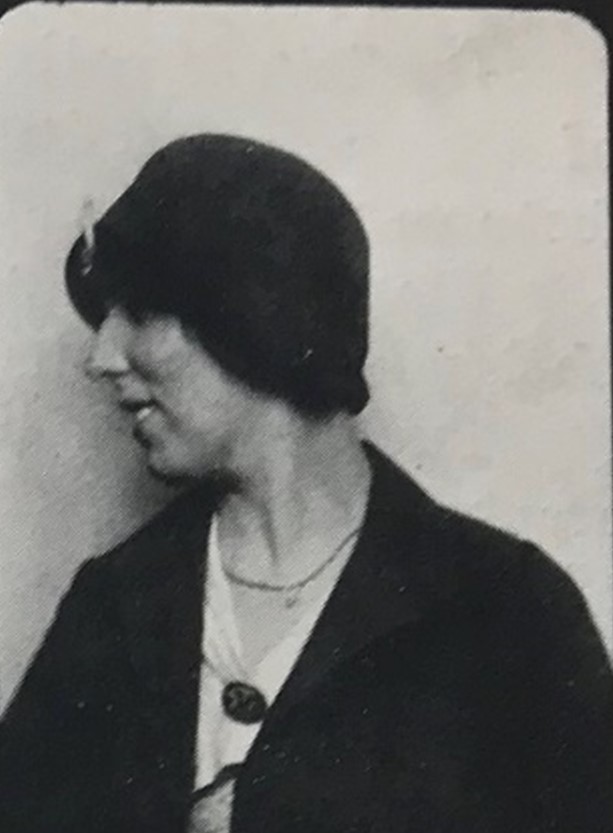

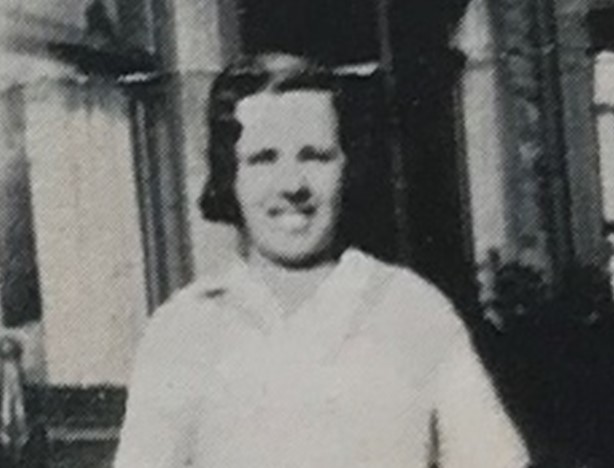
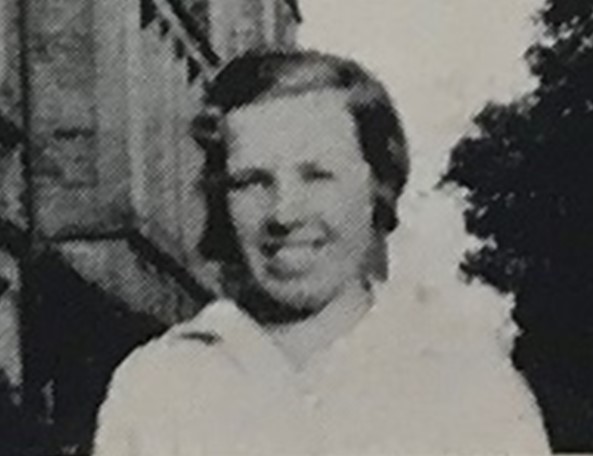
| 1 | Skulls had to be thoroughly cleaned to enable identification and matching of features. |
| 2 | Skulls orientated to match the photographs. |
| 3 | Skulls mounted on swivels so that they could be moved into different positions. |
| 4 | Expert assistance from a Forensic Odontologist was brought in to try and recreate the missing teeth. Teeth had been removed during the dismemberment of the bodies to prevent identification of the skulls. |
| 5 | Specialist photographers were brought in, Detective Constable Kenneth Stobie, from Edinburgh City Police. The best photograph to work on was thought to be a studio portrait of Isabella and it proved possible to source the original negative from the photographic studio in Lancaster. |
| 6 | The eye sockets, tooth sockets and nose holes were filled with clay, to avoid shadowing the subsequent images. The skull was orientated on the swivel mount so that it angled in exactly the same way as the portrait photograph and re-photographed. |
| 7 | The original negative was magnified to life size to match the photograph of the skull and the images of both negatives were then overlaid using the eye sockets, nose holes and mouth to align them. |
| 8 | The process was repeated with Skull 1 (believed to be Mary’s) but the result was not as good. This was felt to be because of the relatively poor quality of the available photographs of Mary. |
